Prepper Supplies
Rural Survival Tools
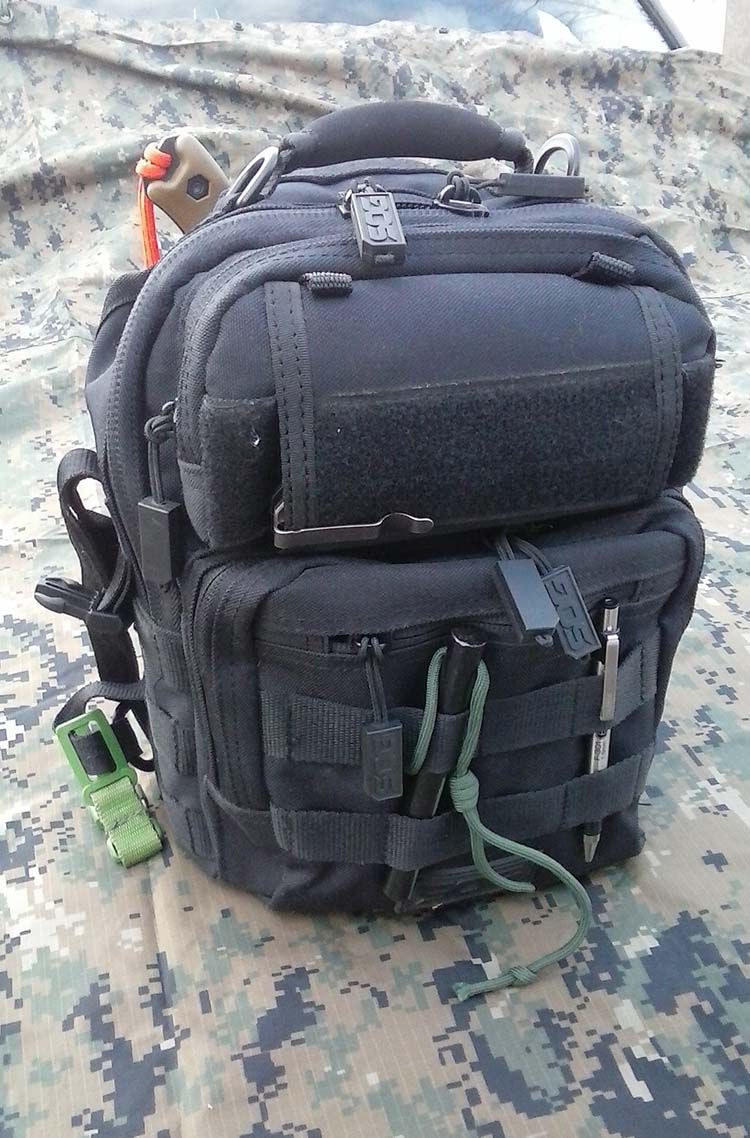
EDC & Survival Tools for Rural Preppers
I can’t really define my life as wilderness living, urban or even suburban. Navigating my typical week often finds me in all three settings. Though for the most part, I am moving through the rural landscape into towns, suburbia and sometimes city proper.
As a result my EDC or “Get Home Bag” is an evolving entity to help me across all those environments. I keep it all secured in a small sling bag that goes out the door with at all times. I keep it my vehicle most of the time. That is to say within walking distance from where ever I might be. I make minor changes through out the year, as the seasons change. The contents I present are usually in the bag year round.
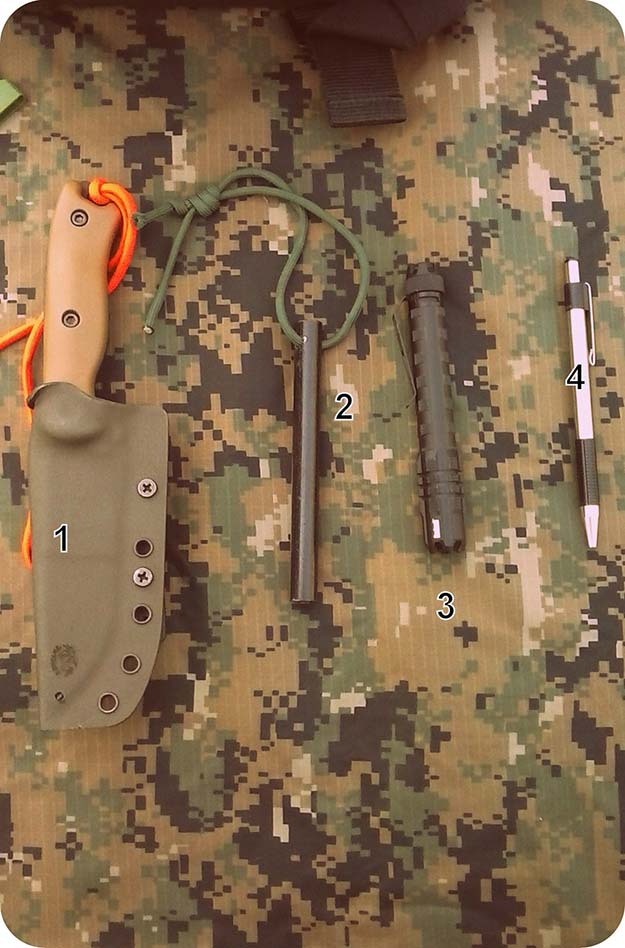
Hooked to the MOLLE straps on the bag exterior I keep these 4 items that I may need often.
- Becker BK-16 in Kydex Sheath with Tek-lok
- Large Firesteel with lanyard
- Tactical Flashlight
- Zebra Pen
I should also note the bag is designed with Concealed Carry options.
Getting inside the bag itself I carry things that I use often and/or have a high potential of needing.
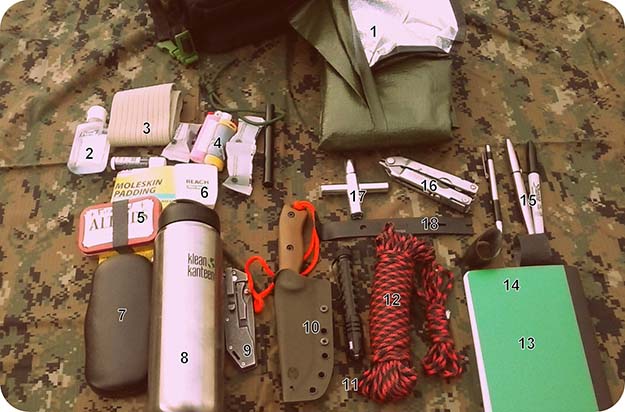
- 5 x 7 All Weather Blanket
- Hand Sanitizer
- Elastic Bandage
- Fire ( Bic(s), Firesteel, Wet Fire Cubes)
- First Aid Kit (Band Aids, pain killer, Imodium, chapstick, Moleskin, etc…)
- Dental Floss
- Spare Prescription Eyewear
- Stainless Steel Water Bottle
- Assisted Opening Folding Knife
- Fixed Blade in Sheath
- Tactical Flashlight
- Cordage
- Note Book
- Ranger Bands
- Sharpies
- Multi Tool
- 4 Way Wrench
- 7 inch Pry Bar
The gear listed above is mostly standard survival type gear found in most kits. The last two items are for built up areas. I can’t always count on being in the woods or near fresh water if an emergency situation came up. I’m a country guy, if you leave me in the middle of nowhere, I will have a very high chance of finding water and a place to hole up in during a storm. Put me in an urban environment during a crisis and I will be struggling.
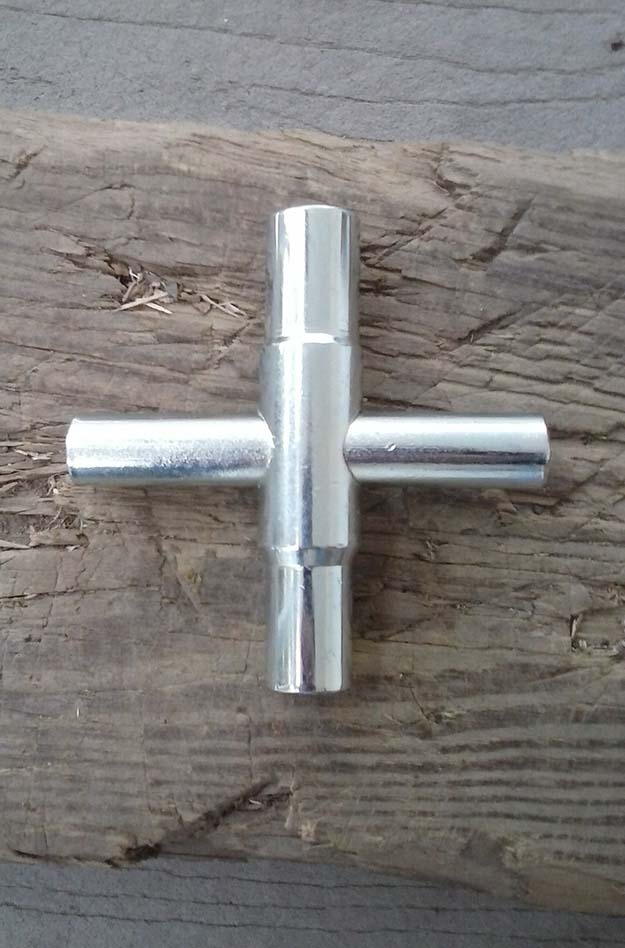
The 4 way wrench or 4 way sillcock key is for turning on outside water spigots. Most that you see around buildings have the “knobs” removed. This wrench has 4 standard sizes commonly found on spigots. Don’t get me wrong, I’m not talking about running up someone’s water bill, just getting water to stay alive.
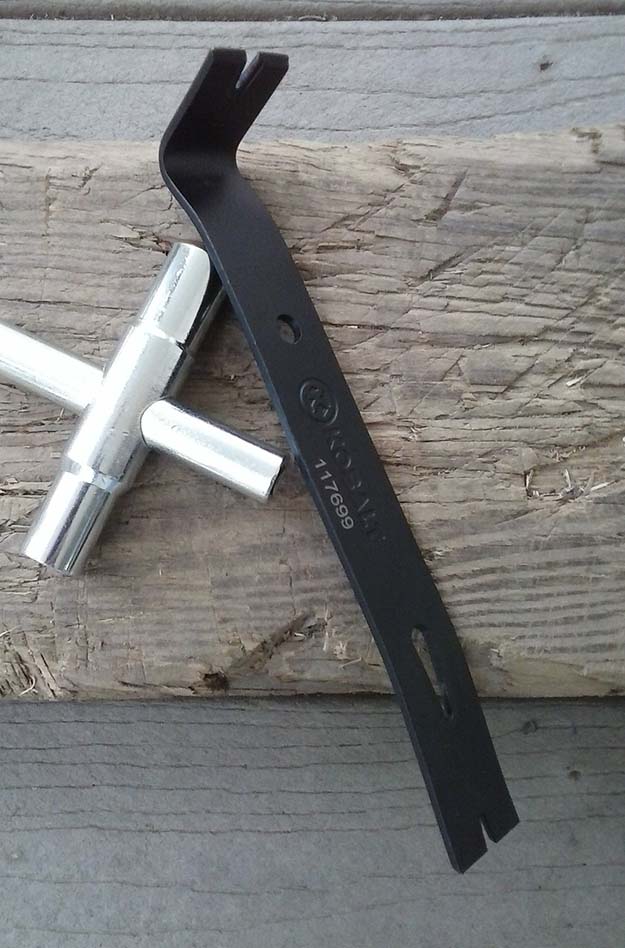
The last Item listed is a 7 inch Pry Bar. I can think of a hundred uses for this tool. It is worth the space even if it’s just to open a crate or box. It provides mechanical advantage in opening doors and windows. It can be pressed into service for self defense, and being made of carbon steel could strike a spark when desperate.
So that is what I head out into the world with every day. I know it could be improved and some things may change as I discover and learn new skills.
I would really like to hear what other people carry along as EDC or Survival Tools in a rural environment.
Take Care and be Safe!
Want more tips? Check out these related articles from our site:
Here’s What’s in My EDC. What’s in Yours?
Compass: A Must Have Survival Tool
Bulletproof Your Everyday Carry
-

 Do It Yourself7 months ago
Do It Yourself7 months agoParacord Projects | 36 Cool Paracord Ideas For Your Paracord Survival Projects
-

 Do It Yourself9 months ago
Do It Yourself9 months agoHow To Make Paracord Survival Bracelets | DIY Survival Prepping
-

 Do It Yourself9 months ago
Do It Yourself9 months ago21 Home Remedies For Toothache Pain Relief
-

 Do It Yourself10 months ago
Do It Yourself10 months agoSurvival DIY: How To Melt Aluminum Cans For Casting
-

 Exports8 months ago
Exports8 months agoAre Switchblades Legal? Knife Laws By State




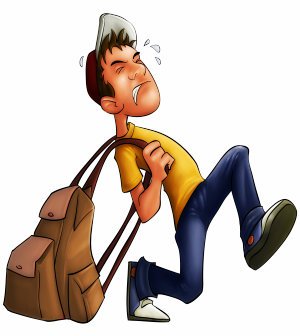

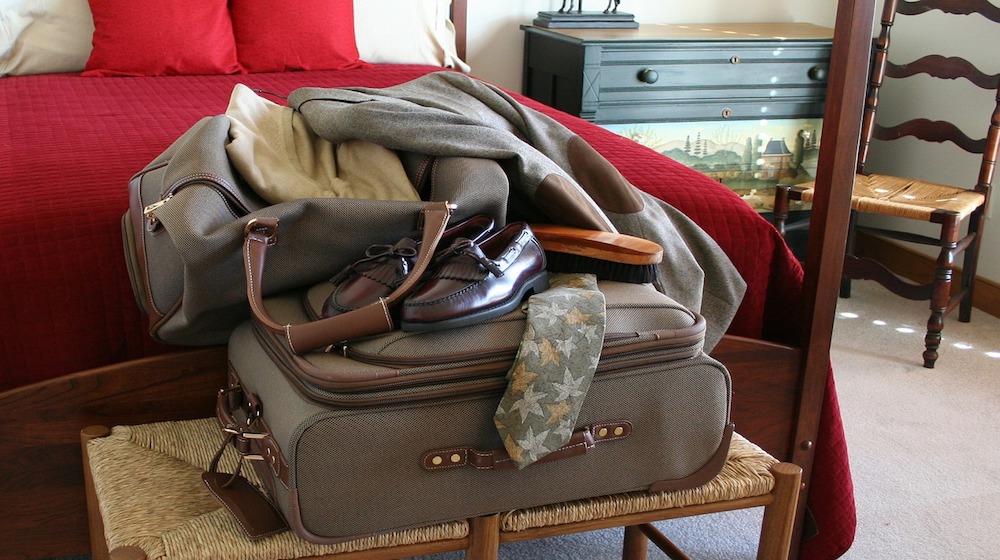


Preston Gallup
February 27, 2016 at 10:55 AM
Good article. My Edc includes only a pen size flash light when I expect to be after dark and in day light I only carry a medium size pocket knife, small size pepper spray, and small 40 caliber auto with extra mag these few items are like an American Express card I never leave home without them . In my bug out or get home bag I carry most of the normal stuff plus a net needle it weighs nothing I have not heard of people carrying this item but it allows me to be able to catch crayfish cat fish rabbits birds make hoop nets or gill nets. I believe to many so called survivalist or peepers put to much emphasis on gadgets instead of skills netting is an easy skill to learn
john-atlanta
February 27, 2016 at 11:41 AM
Part of my everyday carry is a 9v flashlight by palight. They went out of business about two years ago when the owner died of cancer and the wife said she was selling off all the assets. It is one of my most valuable tools. Not really extremely bright, though it can blind someone for a minute, it is rectangle so it can’t roll away that easily, fairly water and shock proof, and the light will last over 40 hours on low. Best thing is I just use my seasonal smoke alarm battery changes to keep it feed for almost free. Fits into a shirt pocket and depending on the one you have, it can have a permanent glow setting (though this will shine through a shirt and give you away in the dark). The green one for use with night vision equipment works well.
FWIW: I keep my Swedish Steel in a rubber fuel line so it does not accidentally spark.
Like you I carry a Swiss Army knife that has a good set of pilers. I once fixed a trailer hub/nut with it. Plus, another knife with a window breaker. I carry spare heavy nitrile gloves (for car repairs and 1st AID on someone else) and sometimes a emergency gunshot kit. If your gloves might get wet, the nitrile gloves can be slipped over them to kept them dry for a short amount of time. I carry some extra ziplock bags. I might start carrying a small water straw purifier in case I can not get to my BOB.
In side my hooded winter coats I carry earmuff and winter type gloves. I might start carrying an extra set of socks in the winter jackets, they make good compression wraps and can be used for all sorts of things, including keeping your feet dry. I usually have a GPS and might start carrying a compass too.
.
left coast chuck
February 29, 2016 at 11:13 PM
The 3 biggest dangers I see are an attack on our grid system; a large scale CME event and a direct EMP attack on our country. I don’t rely on any electronic devices because any one of those events will render electronic devices dead weight. All my gear is mechanical. I carry a Leatherman Super Tool 300 which I think is the handiest of the Leatherman tools. Everyone has a favorite. Carry your favorite multi-tool. I also carry a Swiss Army knife and a wide blade folding knife with a 3 7/8 inch long blade. I carry Kimber pepper spray and 2 Bic lighters. If I can’t start a fire with 2 lighters I don’t deserve to survive. This is on my person all the time in various pockets. I always keep the same item in the same pocket so I never have to think about where it is. In my car I always carry enough supplies to last my wife and me one month. The only exception is water where I only carry three gallons of water. Water is heavy and there is a limit to how much one can carry. My list of supplies in my car is too lengthy for this forum. I have a folding hand cart that I started carrying in the car in the last month so that I can move the gear more easily. Any discussion of firearms or other armament will, of necessity, remain unstated. I like the idea of the pry bar and I think I will add that to my car gear. I have seen small pry bars and I think I will add one of those to my on-body gear. I live in SoCal and so am usually dressed warmly enough for conditions. Any kind of plastic will serve as a rain shelter, it doesn’t have to be something fancy, plastic sheeting from construction site or a plastic garbage bag begged from a store will keep you dry in the rain. If you offer to buy a garbage bag, usually the person in the store will give you one. I have always offered to purchase a single garbage bag but have never had to pay for one yet. “Can I give you a dollar for one of the garbage bags you use in your trash cans?” has always netted me a free bag. Just make a hole big enough for your face and put it over your head. It will keep you dry and in SoCal, at least, surprisingly warm. Being in a remote area is a whole nuther story and calls for more specific items to be added to the car kit. Desert – more water. Mountains – more fire starting and warmer clothing. Winter in the mountains – lots more stuff. I always hike prepared to spend at least one night, even if it is a short day hike on a known trail in a busy area.